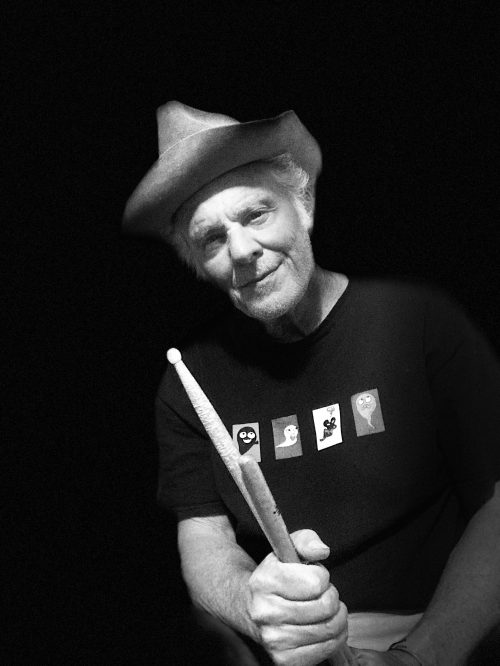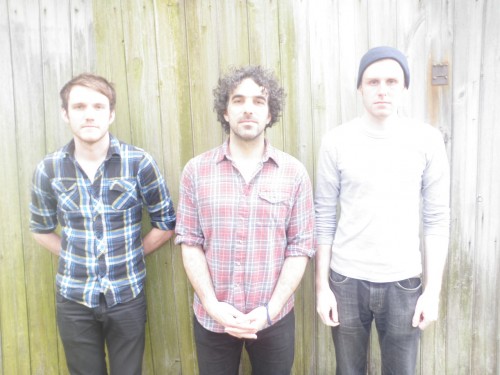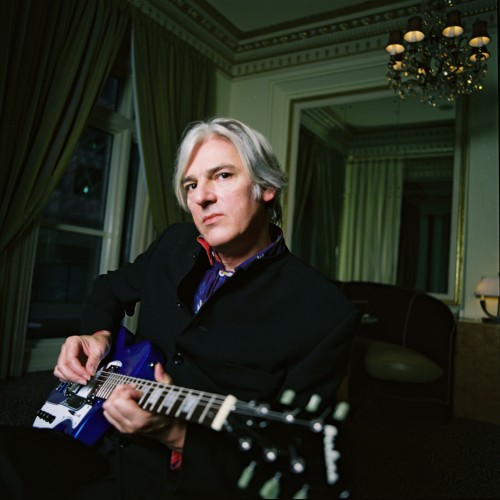Moris Tepper has been spending his time like most of us do. You know, jamming with Tool drummer Danny Carey, learning to play a Turkish instrument called the bağlama, painting and sculpting. He has a new song he wrote on horn he’s excited about, too.
In the midst of this seeming maelstrom of multidiscipline, Tepper, a guitarist who has in the past collaborated with PJ Harvey and Tom Waits, among others, has released a new album, “Building a Nest.”
“I’m writing every minute of every day,” says Tepper. “I just write. I’m always writing, I’m always creating, I’m always painting. The creations are specific to the moment.”
I tell him I hear some Warren Zevon in the new songs; he says he respects the late singer-songwriter but doesn’t listen to him. A similar thing happened when Lou Rogai, who is working with Tepper on the release through his La Société Expéditionnaire label, told him it’s the best album Paul Westerberg never made; Tepper is aware of Westerberg and The Replacements, but he hasn’t listened to either.
These anecdotes are emblematic of the record: fleetingly familiar, avant-garde yet accessible.
In the lead-up to its release on April 8, Tepper put out several music videos.
“First of all, I had never done it before [on his own]. … What comes to mind is I’m fucking pissed off that with my phone I’ve never taken videos; I’ve always taken photos.”
His first attempt at a video for “Power to the Homies,” one of the album’s standout tracks, “was following the lyrics too closely. So not hip.” In the end, he used content from his phone and the public domain.
For the video for “The Visitor,” he explains: “The song doesn’t say this, but the English and the Spaniards coming to America led to the destruction of America, which I find a disgusting country — all the destruction that comes along, disease and so on. I was looking for that footage of armadas and things and went through like 30 pirate movies and couldn’t find the right shot.”
Turning to the Library of Congress archives, he found some images that clicked for him. “A weeping widow by a seashore, that kind of spoke to me. The Venus flytrap was just something I found. I saw that the original ‘Nosferatu’ had ship stuff. The woman that’s sitting in the sand with the black crosses, that was from ‘Nosferatu.’ I found stuff and then went with it. In the end, it’s not really saying what I really wanted to say but it works. And even more than on the first, I had comments from friends that this is a great video. I probably shouldn’t try so hard.”
Tepper, from Los Angeles, began playing guitar for Captain Beefheart in the ‘70s. Beefheart, the performance name of Don Van Vliet, was known to be a demanding boss. At one of Tepper’s first rehearsals, the bandleader locked him in a steamy closet.
“He heard that I was humming C,” Tepper recalls. “To this day, I can’t hum C. I don’t have perfect pitch. He was claiming that because I had listened to The Beatles, I needed to be broken of it. So he put me in a closet with a hot water heater and gave me a cassette machine and made me listen to Mississippi John Hurt and wouldn’t let me out and said, ‘You are being washed of C.’
“Not only have I been cured of C, but I have been brainwashed with the library of Van Vliet.”
Working with two saxophone players, three other guitarists and other odd configurations with Beefheart and his Magic Band, including on albums such as “Ice Cream Crow” and “Doc at the Radar Station” meant “years of very intense” playing. “When I jam [today], there’s still a lot of that in me.”
His work with Beefheart caught the attention of other single-minded artists such as Waits, PJ Harvey, Frank Black of Pixies and Robyn Hitchcock.
“Especially Tom Waits, also Frank Black and Robyn Hitchcock for sure, [they were saying], ‘Oh my God, I want the guitar player from Beefheart.'”
Asked if he’s found any common traits among the aforementioned artists, he says, “No. They’ve all been different from each other quite a bit. Not really.”
Well, there is one thing.
“Maybe with Charles Thompson [Frank Black] and Beefheart, they are people who consider themselves highly. Everyone considers themself highly, but some people are more open about it. Beefheart is more different than all the rest in that.”
As he did with Beefheart, he contributed to some important albums with Tom Waits, like “Franks Wild Years,” and Black’s first solo album, released in 1993.
“It’s so funny. I was today listening to an album, ‘Honeycomb.’ When I was asked to play with [Black], I knew no Pixies. I’m not really like a Pixies guy. But there’s an album called ‘Honeycomb’ and a song called ‘Selkie Bride.’ I don’t play on that song. I was doing some yoga today and I put it on and it blew my mind. He’s a really great writer. He’s got an overview. His whole thing, he’s got a lot of places he knows about.”
Tepper clarifies that despite working with her for years, he never played on a PJ Harvey album, but he toured with her, and “she actually played in my band, she played bass.”
“I texted with her just last month,” he says. “We stay connected. We’ve had many shared experiences outside of music.”
Another thing that artists who have enlisted Tepper’s talents seem to share is they make music that he enjoys.
“When someone likes my aesthetic, I’m always grateful that they want me to support their aesthetic, their music,” he says. “It’s really not a money thing at all. There could be a band that I’m not into that would offer me money and I’d have no interest in playing with them.”
Despite his penchant for collaboration, Tepper does not plan to put together a band to play any shows in connection with the release of “Building a Nest.”
“If I do live shows, it’s because it’s an idea and it sounds good to me,” he says. “There are people who love to play live and love people watching them play live. I’ve had great live shows, but it’s like one in 10. Dragging equipment, fans not paying attention, or it sounds like shit or not getting paid. A lot of my touring is in conjunction with opening for other artists, which is not a really giving situation. People talking. Or you’re playing solo because you can’t afford a band. It hasn’t been as gratifying a situation for me as it has for other people; just that they’re there in front of people playing gets them off.”
Photo courtesy of Moris Tepper




Leave a Reply